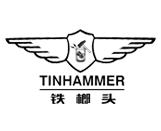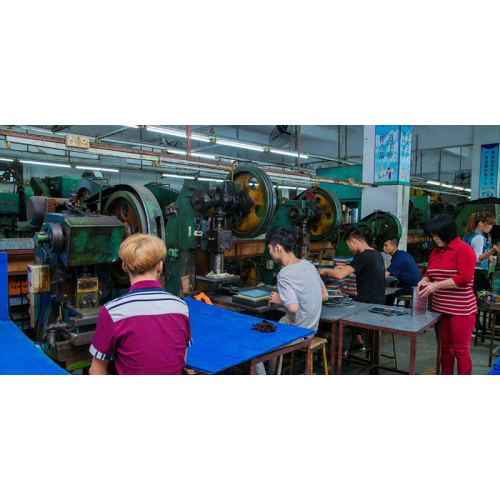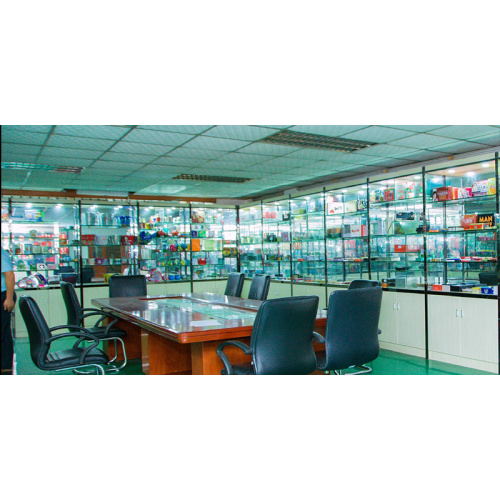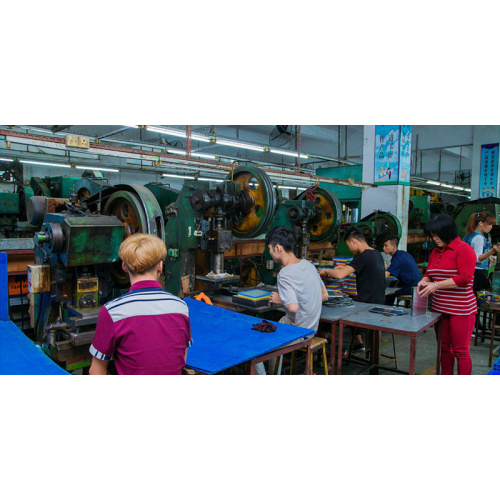The common metal packaging forms in food packaging mainly include metal boxes and metal cans. Metal boxes are mainly used for high-end packaging of biscuits and snacks. Biscuit packaging often uses a round metal box with a lid, which has a diameter of approximately 200 mm and a height of approximately 80 mm. The bottom of the box is joined to the box by a bead. The lid can be removed at any time. The box contains three layers of biscuits. Each layer has a special paper mold. Not only the layers can be separated from each other, but also the biscuits in each layer are isolated from each other to prevent the high-grade crackers from being damaged due to extrusion or impact. Metallic body and lid are printed with a dark blue background, and then overprinted with a golden biscuit pattern, very eye-catching. On the front of the lid is also printed the name of the biscuit and the manufacturer's trademark, and the side is symmetrically printed with ingredients and manufacturers. In addition to the pattern, the box has a trademark, a bar code, a built-in quantity (500 grams), an expiration date, and a factory address. Metal boxes are commonly found in snacks, including dessert-like chocolates, and their contents can be described as varied. It is in the form of a rectangular or square box with a content of 400 grams or 500 grams. Usually, the contents are divided into two or three layers. Each layer of cake is placed in a paper mold. The lid and the box body have two fitting methods. One is a simple direct fitting. The other is that the long side of the box lid is connected with the long side of the box body like a hinged hinge, so that opening and closing are convenient. . The box cover of the metal box has been printed very beautifully, with vivid colors and vivid designs. The large part of the screen is mainly based on the interior, but there are also scenes like Christmas scenes or winter snow. Trademarks and interior volumes are generally printed on the side of the box and other information is printed on the sheet and then affixed to the bottom of the box.
Another type of metal packaging for food packaging is canned food. In addition to various types of canned fish introduced in the previous issue, it is also widely used in various vegetables, fruits, and soup packaging. Vegetables include cabbage-cut sauerkraut, processed short-stalked sauerkraut, granular peas, or a mixture of carrots processed into small round pieces, sliced small mushrooms, and processed corn grains. Fruits include peaches, strawberries, pears, sliced or sliced pineapple, four or five kinds of fruit mix. Soup ingredients include tomato soup, mushroom soup, beef soup, minced vegetable soup, and shrimp soup. These metal cans are packaged in the form of a vertical can of three-piece cans. The difference is only the difference in size, that is, the amount of internal packaging. The built-in volume is usually ranging from 100 grams to 800 grams, which can meet the needs of different consumers. Most of its packaging information is printed on paper that matches the can height and perimeter, and then the paper is wrapped around the can. Only the effective period of time is directly printed on the metal of the can lid or the bottom of the can. Particularly special is the metal cans containing processed peanuts or cashew nuts. Its internal content is not large, only 150 grams. Its bright patterns and text descriptions are directly printed on the cans, and the lids are easy to pull rings. Whether it's a trip or an outing, you can turn it on immediately.
Another area where metal packaging is widely used is chemical products, which of course include dangerous goods. The most common are automotive auxiliary products, such as various coating oils, rust preventive oils, etc., which have different packaging sizes, and the shapes of the metal buckets used are also different. There are 400 ml or 500 ml, and there are also 150 g or 3 Kilograms. The cans are of various shapes, including flat, round, and spray cans. Their printing is particularly beautiful, the same product often has a variety of colors, such as silver, red, blue, green, etc., to meet the needs of different color cars. Detailed text descriptions are also available in several languages. Common languages include German, English, French, and Italian. If it is a large metal drum, a brush pattern is often printed on it to indicate how to use the product. The outlet of some small metal drums is connected to a plastic pipe with a screw cap. When used, it can be squeezed to accurately drop the contents to the desired place. It is also interesting to note that these metal buckets have plastic covers.
Another common type is paint metal packaging, which is mainly used for wood materials such as cookware, doors and windows, and stairs. Most of its packaging uses a cylindrical vertical cylinder, the shape of the lid is concave and convex. The vat (for example, 5 liters) is equipped with a lifting ring. The two cylinders with small holes on the welding are connected to the barrel. After folding a section of the wire into a certain shape, the two ends can be set on a small cylinder. Lift the ring. There is also a 2-1/2-litre, plastic strapping strap. There is a paint bucket with a built-up capacity of 5 liters. The packaging printing is done directly on the metal. The background color is close to that of the wood and is equipped with wood stripe. A large brush is printed on the screen, paint is stuck on the brush head, and the trademark and green recycling mark are also printed on the front. Detailed text descriptions are everything. For example, the paint is resistant to insects, mildew, hot or cold and will not affect its use effect. . Buckets such as 750 ml, 375 ml, and 250 ml do not require ring lifting. Their manufacturers, brands, properties, uses, etc., are printed on the barrel. According to the needs of the color, a special method is used to distinguish, namely, the name of the color is printed on a self-adhesive paper, and then it is peeled off and applied to the center of the concave cover.
Metals are also used as packaging materials for sealants and adhesives. Common sealants are mostly used as construction materials, and the packaging containers are mostly vertical drums or trapezoidal barrels with lifting rings, and their capacities range from 1 to 10 liters. A detailed description is printed on the metal barrel. It is used between the pipe and the wall, bricks and roofs, and it is waterproof and moisture-proof. This product belongs to the category of dangerous goods, so it is marked with detailed flammable and explosive toxic signs and instructions. It also draws a dead tree and a dead fish floating on the water besides the words that describe the environment. The metal barrels of the adhesives are relatively small, and the contents of the barrels are 300 grams and 625 grams. The text on the barrels indicates that the package must not be exposed to fire. The packaging waste is special waste and cannot be littered.
Compared with the packaging containers of other materials, the metal container has its own characteristics, and it has good protection properties for the contents, and can be shading and water blocking, has high mechanical strength, long shelf life, and is safe and reliable. But whether Germany considers more or how to better protect the environment. Therefore, from the perspective of energy saving, cost reduction and environmental pollution reduction, the application of metal packaging has been limited in Germany. The use of metal packaging materials has become less and less in Germany, and this packaging material has been replaced by cardboard, plastic or composite materials in many areas.









